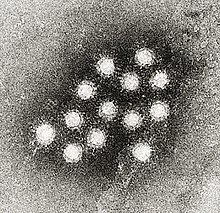Virus classification is the process of naming viruses and placing them into a taxonomic system similar to the classification systems used for cellular organisms.

Hepatitis A is an infectious disease of the liver caused by Hepatovirus A (HAV); it is a type of viral hepatitis. Many cases have few or no symptoms, especially in the young. The time between infection and symptoms, in those who develop them, is 2–6 weeks. When symptoms occur, they typically last 8 weeks and may include nausea, vomiting, diarrhea, jaundice, fever, and abdominal pain. Around 10–15% of people experience a recurrence of symptoms during the 6 months after the initial infection. Acute liver failure may rarely occur, with this being more common in the elderly.
Echovirus is a polyphyletic group of viruses associated with enteric disease in humans. The name is derived from "enteric cytopathic human orphan virus". These viruses were originally not associated with disease, but many have since been identified as disease-causing agents. The term "echovirus" was used in the scientific names of numerous species, but all echoviruses are now recognized as strains of various species, most of which are in the family Picornaviridae.
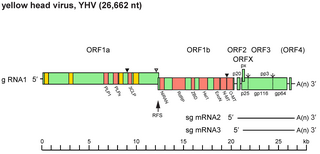
Okavirus is a genus of enveloped positive-strand RNA viruses which infect crustaceans. Host organisms are mostly shrimp. It is the only genus in the family Roniviridae. Viruses associated with the genus include: gill-associated virus (GAV) which causes reddening, biofouling with exoparasites, emaciation, and massive mortality; and yellow head virus (YHV) which causes yellow head, arrest of feeding, and massive mortality. The name is derived from the 'Oka' or lymphoid organ in which the viruses are commonly detected and in which pathology occurs during acute infections. Lymphoid organs are anatomical structures common to penaeid shrimp. There are three species in this genus.
Luteoviridae was a family of viruses. The family was abolished in 2020 based on evidence that its three genera and seven species unassigned to a genus belonged to two other, existing families.

Potyviridae is a family of positive-strand RNA viruses that encompasses more than 30% of known plant viruses, many of which are of great agricultural significance. The family has 12 genera and 235 species, three of which are unassigned to a genus.
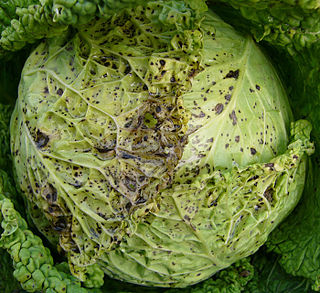
Tymoviridae is a family of single-stranded positive sense RNA viruses in the order Tymovirales. Plants serve as natural hosts. There are 42 species in this family, assigned to three genera, with two species unassigned to a genus.
Rubivirus is a genus of viruses. It contains three species.
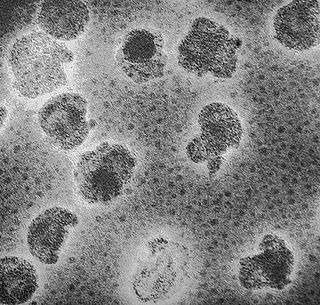
Plasmaviridae is a family of bacteria-infecting viruses. Acholeplasma species serve as natural hosts. There is one genus in the family, Plasmavirus, which contains one species: Acholeplasma virus L2. All viruses known in this family have been isolated from species in the class Mollicutes.

Secoviridae is a family of viruses in the order Picornavirales. Plants serve as natural hosts. There are 8 genera and 86 species in this family, one of which is unassigned to a genus. The family was created in 2009 with the grouping of families Sequiviridae, now dissolved, and Comoviridae, now subfamily Comovirinae, along with the then unassigned genera Cheravirus, Sadwavirus, and Torradovirus.

Ampullaviridae is a family of viruses that infect archaea of the genus Acidianus. Only one genus in this family has been described, Bottigliavirus, which contains three species. The name of the family and genus is derived from the Latin word for bottle, ampulla, due to the virions having the shape of a bottle. The family was first described during an investigation of the microbial flora of hot springs in Italy.
Dinodnavirus is a genus of viruses that infect dinoflagellates. This genus belongs to the clade of nucleocytoplasmic large DNA viruses. The name is derived from 'dino' (dinoflagellate) and DNA.
Alphasphaerolipovirus is a genus of double stranded DNA viruses that infect haloarchaea. The genus contains four species.
Hukuchivirus is a genus of double-stranded DNA viruses that infect thermophilic bacteria. The genus was previously named Gammasphaerolipovirus.
Mitovirus is a genus of positive-strand RNA viruses, in the family Mitoviridae. Fungi serve as natural hosts. There are five species in the genus.
Turriviridae is a family of viruses; it contains only one genus, Alphaturrivirus. The archaea Sulfolobus solfataricus serve as natural hosts. There are two species in the genus Alphaturrivirus.
Permutotetraviridae is a family of viruses. Lepidopteran insects serve as natural hosts. The family contains one genus that has two species. Diseases associated with this family include: infection outcome varies from unapparent to lethal.

Solemoviridae is a family of non-enveloped, positive-strand RNA viruses which infect plants. Solemoviridae is a member of the order Sobelivirales.
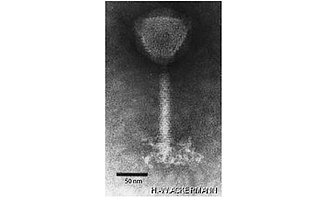
Herelleviridae is a family of bacterial viruses of the order Caudovirales infecting members of the phylum Firmicutes. The family has five subfamilies, 33 genera and 92 species.

Ribozyviria is a realm of satellite nucleic acids. Established in ICTV TaxoProp 2020.012D, the realm is named after the presence of genomic and antigenomic ribozymes of the Deltavirus type. Additional common features include a rod-like structure, a RNA-binding "delta antigen" encoded in the genome, and animal hosts. Furthermore, the size range of the genomes of these viruses is between around 1547–1735nt, they encode a hammerhead ribozyme or a hepatitis delta virus ribozyme, and their coding capacity only involves one conserved protein. Most lineages of this realm are poorly understood, the notable exception being members of the genus Deltavirus, the causal agents of Hepatitis D in humans.
